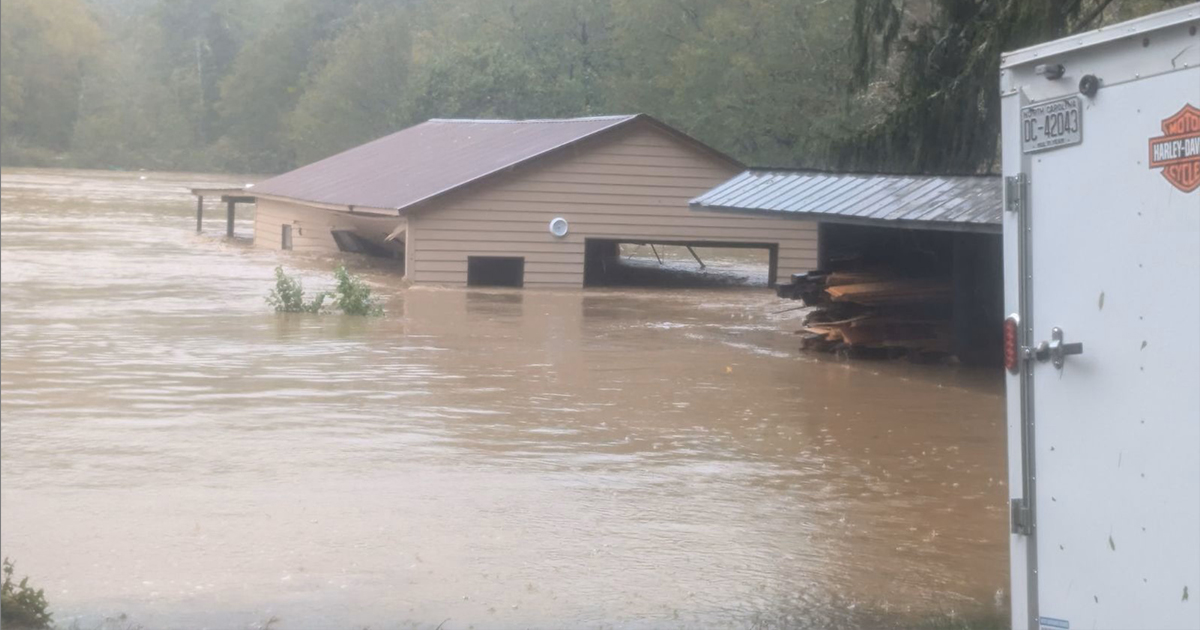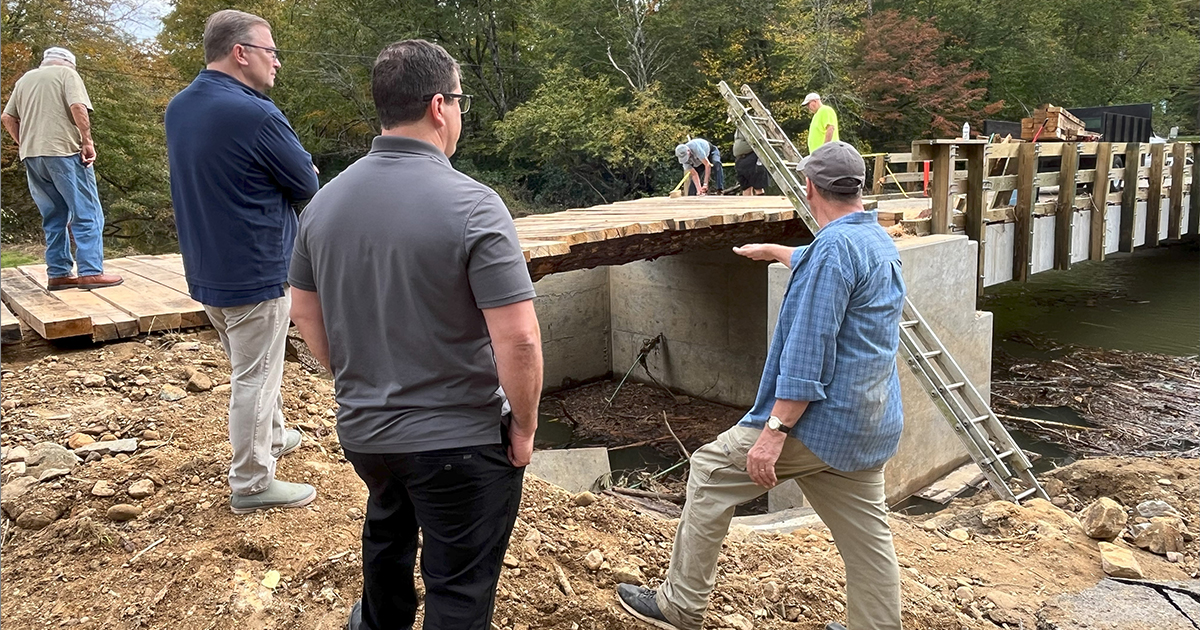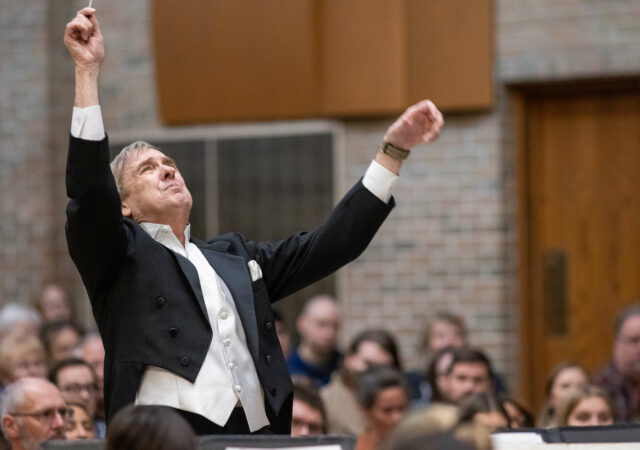
By Cheryl Magness
“It’s never been this bad before.”
“We were scared for our lives.”
“Everything is gone.”
When Hurricane Helene came ashore near Perry, Fla., as a Category 4 storm on Sept. 26, those in its path knew it could be serious. They made their preparations, took precautionary steps, and waited for the storm to pass. When it did, initial reports were that it wasn’t as bad as it could have been. And for some, it wasn’t. But for others, it was worse than they could have ever imagined.
Weeks later, the estimated death toll stands at almost 250 people across seven states. There are still many people unaccounted for, especially further inland in places like western North Carolina, where entire communities were washed out by flooding. Damage estimates are in the tens of billions of dollars. And that is even before the impact of Hurricane Milton, set to make landfall in Florida on Wednesday, Oct. 9, is known.
Within days of Helene’s landfall, the Rev. Dr. Ross Johnson, director of LCMS Disaster Response, took a multi-day trip to the affected areas. He reported that the impact in Florida consisted primarily of flooding; in Georgia, wind damage; and in North Carolina, both.
First impact: Florida
On Tuesday, Oct. 1, Johnson toured the Tampa area with Jay Wendland, district disaster response coordinator (DDRC) for the LCMS Florida-Georgia District, visiting several homes near Tampa Bay that were severely impacted by a nearly 20-foot storm surge. In particular, almost 50 families at Grace Lutheran Church, St. Petersburg, Fla., experienced some degree of damage, along with 15 families from Our Savior Lutheran Church, St. Petersburg.
Lisa Kauffman of Gulfport, Fla., a member of Our Savior, was in her home as the floodwaters started to rise.
“We had sandbags. We were all prepared, like usual,” Kaufmann said. “And then [the water] started getting higher and higher.” Kauffman’s boyfriend, who had come to wait out the storm with her, went to check on another property. By the time he returned, it was too late to evacuate.
“I had to go up and stand on my kitchen counter,” Kauffman said, adding that she held her Yorkie chihuahua above the floodwaters for six straight hours. Friends came by in canoes, but getting in one of the canoes would have required climbing out a window into a rushing current, and Kauffman didn’t feel safe attempting it.
Just as Kauffman and her boyfriend were talking through a plan to climb up to the attic and, if necessary, break through the roof, the water level began to go down. As she begins the process of recovering, Kauffman is thankful for all the help that has come, especially from her church. “They sent help immediately, to go through stuff, do laundry, whatever we needed. Pastor [Christopher] Futch has been incredible.” The ordeal was traumatic enough that Kauffman is not planning to remain in Gulfport. Where will she go? She is not sure, but she isn’t worried. “God will put me somewhere.”
Next: Georgia and North Carolina
As the recovery continues in Florida, Johnson is coordinating with the pastors at both Grace and Our Savior to provide grants to assist church members. Our Redeemer Lutheran Church in Tampa is providing housing to Lutheran Early Response Team (LERT) volunteers working in the greater Tampa Bay area. (At this writing, they are temporarily relocating to Valdosta, Ga., to avoid Hurricane Milton’s impact.) DDRC Wendland is tracking church workers who have been directly affected, with the district anticipating that around 30 workers will require assistance. In Georgia, where the response will be focused on chainsaw work, two volunteer camps — one in Valdosta and one in Augusta — will operate over the next 3–4 weeks.
In North Carolina, Helene packed a double whammy of wind and water, necessitating both extensive chainsaw work and flood recovery. LCMS Southeastern District (SED) President Rev. Dr. William Harmon noted, “It’s such a unique event to have a hurricane hit the mountains of North and South Carolina. … All of that water has to go somewhere. There are whole communities that our congregations are trying to care for. … We’re seeing the church do what the church does so well, which is love their neighbors and care for their communities.”
Harmon said that many areas throughout western North and South Carolina were impacted by Helene, including Asheville, N.C.; Tryon, N.C.; Hendersonville, N.C.: and Newland, N.C. In Asheville, water remains a great need, as the city’s water plant was damaged and will probably not be operational for another month. In Tryon, the sanctuary of Trinity Lutheran Church was flooded. Mount Pisgah Lutheran Church in Hendersonville also sustained damage.

‘Lots of miracles’
But probably the most extensive damage to property in the SED was in the area of Newland, N.C. Both Camp Linn Haven, an LCMS RSO, and Mountainside Lutheran Church, which is on Camp Linn Haven’s campus, suffered severe damage, with up to six feet of water impacting 13 buildings, including the church, dining hall, camp parsonage and nine cabins. The camp and church are surrounded on three sides by the Linville River, which, at this location, is normally a wading creek. Helene turned it into a raging river, up to 25 feet above its normal level and eight feet higher than the largest recorded flood in the area. Only one building on Camp Linn Haven’s campus is currently useable. Repair cost is estimated in excess of $2M.
The Rev. Bryan Chestnutt, pastor of Mountainside, sees the hurricane as an opportunity for his congregation to be a light to a community in need.
“This is the only LCMS church in the eight northwestern counties of North Carolina,” Chestnutt said. “People drive in from multiple small towns, some an hour and a half away. All of these communities have suffered tremendous damage to infrastructure, homes, businesses. So many people have been displaced from their homes and jobs, not to mention the death toll. [Responders] are still trying to find people.”
Several members of Mountainside sustained damage to their homes, but everyone came through the storm without injury. Immediately afterward, and with no place to hold a service, the congregation was not able to regroup in time for Sunday worship. But the following Sunday, Oct. 6, they worshiped via Zoom. Going forward, the church has arranged with Land Harbor, a nearby resort community, to gather for worship in the community recreation center. “We would like to be back in our sanctuary by Christmas, but we’ll see,” Chestnutt said. “That will take lots of miracles, but lots of miracles have already happened.” Some of those miracles consist of the many volunteers who have already shown up to help. Sometimes it’s just a random stranger who quickly appears, helps out with the task at hand, and then just as quickly disappears.
As both the camp and the church begin to think about rebuilding, challenges remain. Travel is still slow and difficult due to road conditions. Some people still lack internet and power. And many in North Carolina are still suffering the loss not only of property but grieving the loss of loved ones. Chestnutt relates the story of an acquaintance, a roofer who had worked on camp properties in the past, who lost his life in the flood. “His house slid down the hill. He pushed his wife out, but he didn’t get out.”
“We are taught, even as we thank the Lord for something,” Chestnutt continued, “also to mourn with those who mourn. There is plenty of mourning all around … a lot of loss.”
Chestnutt said the response from the LCMS has been “overwhelming.”
“President Harmon called me and said, ‘I’m coming and I’m bringing Ross Johnson.’ … The response from both of them has been incredible. We didn’t even know what we needed. … We couldn’t even think straight. … The counsel we got and the help that we are getting from our district president and from the Synod has been wonderful. … This camp has always been lots of churches working together, but to have the whole Synod — that wider family among the LCMS — walking with us at a time like this, you really feel what the word ‘synod’ means.”
Harmon said the greatest needs continue to be water, especially in Asheville; food; hygiene kits; flood cleanup kits; volunteers; money; and, of course, prayer. Those wanting to help are encouraged to visit the SED website at se.lcms.org. Harmon also emphasizes the need for people “to consider becoming LERT-trained so that when these things happen we have an army of people standing by to do what needs to be done.”
The silver lining in all this, he adds, is how beautiful it is “to see the heart of the church. … I’ve gotten phone calls from Washington state, Illinois, Michigan, California, New York, all over the country, with people asking, ‘How are you doing? How can we be supporting and assisting you?’
“Every church along the western side of the district, as well as the district as a whole, is actively trying to help people, care for people, support people. It’s important to remember, at these times, that disaster response is not just about helping our own congregation members. It’s about helping our communities in their time of need so that they see the presence of Christ amid tragedy.”

‘Grateful every day’
As the recovery from Helene gets underway in earnest, and as Hurricane Milton threatens, its impact as yet unknown, there is no shortage of challenges ahead. But those who wait upon the Lord know that He will renew their strength and sustain them through whatever comes (Isaiah 40:31). Destiny Harrold, a teacher at Grace, St. Petersburg, said her church family has provided a port in the storm.
“It’s indescribable. … They are stepping up to do things I never thought … they could offer to do. … We knew we were blessed before — Grace is an amazing community. We are grateful every day to be a part of it. [But] right now they’re helping us with things that we had no idea [we would need help with].”
Eric Macke, another teacher at Grace, echoed Harrold. He, his wife Laura, and their three children are currently renting an Airbnb property while repairs are being made to their home. “We are a hard family to take in,” Laura says with a smile. “There are not just a couple of us, but a lot of us.”
They hope to return home by Christmas but know that might not be possible. There is a limit to how long they can afford to rent temporary housing, especially as the amount of support they might receive from insurance and other sources is not yet fully known. But they are at peace.
“As someone who was born and raised Missouri Synod Lutheran,” said Eric, “you know that the first thing you do when you move to a new place is find a church. Grace Lutheran has been my church and school — and family — since I was fresh out of Bronxville [Concordia College New York) 25 years ago.”
That church family has never meant more than it does today.
“I don’t know how we would get through this without our church and our faith,” Laura said. “These are all just earthly things. We will replace them; we will rebuild; everything will be fine. I know that God will take care of us. I’m not afraid.
“I guess that’s the best thing about faith. We always talk about how we should ‘pray, don’t worry,’ but then you get in these moments where you have to practice it, and … right now, we are practicing it a lot. … But we know God has a plan, and we’ll be OK.”
More information about both Hurricane Helene and Hurricane Milton will be shared as it becomes available. The greatest needs right now are for prayer, volunteers and financial support, not clothing, household items or toys.
Video update & photos

Learn more
Learn how you can help at lcms.org/hurricane-response.
Posted Oct. 9, 2024/Updated Oct. 10, 2024/Updated Oct. 12, 2024/Updated Oct. 16, 2024




